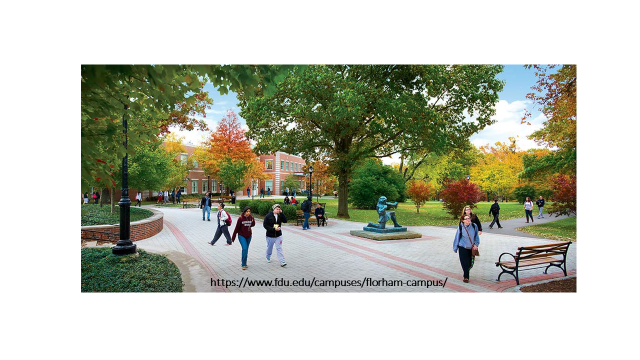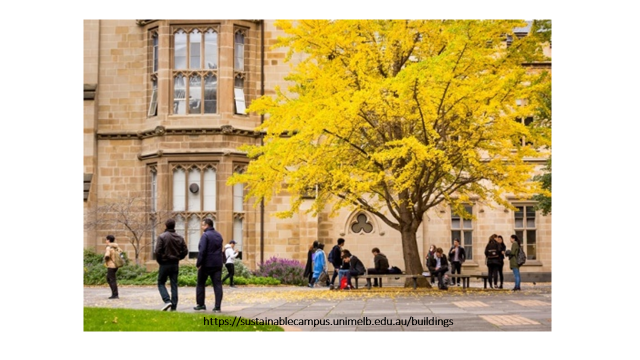
Studying in a university, in the mind of a student with low socio-economic status (SES), is a crucial stride toward upward mobility in the social ladder. It is an opportunity to explore the world of the higher social echelon through tertiary education. A university degree can level and equate the opportunities, as common people thought, to what the middle-upper class have. This refers to what Pierre Bourdieu (1973) coined as cultural capital – the accumulated knowledge, behavior, and skills to demonstrate one’s cultural competence and social position. However, the first step toward entering a university is not as easy as those students with high-SES. Chances become narrow as bunch of paper works commence in the screening process, which could be deemed as either a perplexing journey toward achieving a dream or gaining profound knowledge on social inequity.
This research essay focuses on the phenomenon of inequality that tertiary education enforces. It will discuss the prevalence of disparities in the educational system, which are thought to be as the following; one, the selection process; two, differentiation of higher education; three, stratification and privatization; and four, employment disparity. These themes of inequity transform higher learning institutions as cohorts toward social inequality rather than a mechanism for social mobility and parity.

In Simon Marginson’s “Higher Education and Growing Inequality,” he sees that higher education, instead of abetting social mobility, reinforces inequality. Marginson argues that economic inequity, which harnesses plutocracy – primacy of the wealthy, is boosted in higher education stratification system that leads to the decline of equal chances and access to tertiary education. The term “access” begins in a tedious process of selection and documentation, which always inclines to those with socio-economic resources such as wealth, social prestige and influence. Qualifications, then, are getting steep and highly stratified, which were founded base on economic capability and social power of students and their families.
The selection process, which is highly competitive, is the first stage in quest for tertiary schooling. Qualifications, as a screening tool, are prerequisites to a particular task or activity based on established set of standards or exemplary accomplishments foist to anyone, for instance, a 4.0 grade point average (GPA) is a prerequisite to be accepted in a prestigious university or to be qualified for scholarship funding. In “Gaining Control of the Free-for-All in Financial Aid,” McPherson and Schapiro (1999) exposes that there was a shift in financing undergraduate education from the needy students to student-children of middle-class taxpayers, who are politically clout. This shift leads to more stratified structure in higher education system and breaks down the core purpose of the government’s free-for-all financial aid program that intents to help less-privileged students.

From simple financial criterion, qualifications become tougher to students from low-SES families. Prerequisites are more inclined to students that represent high-SES, social power, influences, and prestige conceded through their families’ social position. This tendency demonstrates manipulation of the university system, fostering student’s competition and individualistic attitude, and harnessing disproportion of income and opportunity in the entire social system. The stratification of the selection process creates longitudinal backdrop of social inequity among students of different backgrounds such as economic and cultural capital, social status and privileges, and power and influence that gives more advantage to children of the wealthy families.
The stratification system, in fact, conceals the distortion of low-SES students’ opportunity in the semblance of world universities’ ranking and branding, which centers on different categories such as academic, research, and graduates employability, among other things. The system allows the high-SES students to dominate the university system, as education is a costly social and cultural investment which only the wealthy can typically afford. Since institutional standards are based on the elite group’s language, behavior and culture – a process of high-class socialization and interaction outside of their families, it is difficult for an outsider, in the case of a low-SES student, to interact and socialize. In the “Differentiation in Higher Education and Its Consequences for Social Inequality: Introduction to a Special Issue,” Reimer and Jacob (2011) perceive that differentiation involves the institutional classification providing more opportunities in terms of programs and levels of study. But, less-privileged students are usually directed to the lower tiers, while the elite remains on the higher tiers. This shows the inclusion of the disadvantaged students in higher education, yet still there is a strong socially selective reservation for students from a privileged social strata.

The government, therefore, has an enormous role to enhance the quality and equal access to education through legislations and educational policies. However, in the “Social Inequality in Modern Higher Education,” Gegel, Lebedeva, and Frolova (2015) expound that the issue of equality couples with achievement through “excellent quality” determined the privatization of education, while the responsibilities for the quality of processes and results were entirely delegated to the learning institutions. This denationalization of education encourages competitions between universities, which further reinforces inequality among students in terms of accessibility and opportunity.
Categorically, ramifications of university privatization widens social disparity in certain aspects. First, institutional wealth creates an innovative and advanced academic environment that makes higher learning more globally competitive, but imposes extremely high entrance requirements. Yet, university structure could be politically motivated and influenced by scholarship benefactors and other philanthropists that makes it more exclusive for the elite group. Second, denationalization of education creates tough institutional wall, which block access and chances of the underprivileged students, hence ensuing psychological challenges that cause adverse impact to students’ motivation to study.
The higher education curricula are designed to enforce the lifestyle and norms of the elite class, thus a shift in social status from lower class to middle-upper class is problematic for a disadvantaged. As low-SES students represent minority in higher education, the institution’s function to choose the “best students” strains their university life. In “The Experience of Low‐SES Students in Higher Education: Psychological Barriers to Success and Interventions to Reduce Social‐Class Inequality,” Jury, Smeding, Stephens, Nelson, Aelenei, and Darnon (2017) conclude that while higher education empowers every student, providing economic resources is certainly not enough for the low-SES students to access higher education and to achieve equality. They emphasize a need for institutional psychological intervention to maximize students’ learning potentials while minimizing success barriers, such as emotional distress, sense of belongingness, perceived threats, and fear of failures that will help diminish SES achievement gap. In this sense, it is not only those students from low-SES group could experience psychological barriers but also those from dissimilar geo-ethnic, sociolinguistic, and sociocultural backgrounds. Although, less-privileged students manage to obtain university degrees, a new episode of equity scuffle awaits them – equal employment opportunities and salary/wage equity in the labor market.

In the “Higher Education, Economic Inequality and Social Mobility: Implications for Emerging East Asia,” Simon Marginson explains that majority of people’s income are earned from labor that are affected by tax policies, which can increase or decrease either income equality or inequality. Further, Marginson describes that income hierarchy is dominated by extremely high income earners from the labor – “super-managers,” wherein higher education has a subservient role. However, he posits that higher education does not play the most compelling role in social equality/inequality, but rather wage/salary fixation and taxing and spending measures by the government do.
In effect, tertiary education declines its enticement to students due to its unaffordability, and the expanding income gap at work, which does not compensate its high costs and strenuous efforts expended in studies. More so, degree devaluation is a form of inequity in the labor market, which accentuates employer’s preferences based on university’s reputation and the candidate’s social background in hiring applicants with similar university degrees.
In synopsis, university education is not a mechanism to equate social disparity, yet it gains a sense of competitiveness in the workforce and increases one’s reputation in the society. Consequently, this paper speculates inequalities, which higher education enforces, in the forms of selection, institutional stratification, program differentiation, absence of psycho-social support, and devaluation of cultural capital base on social circumstances. The selection scheme, in itself, shows inequality in the selection process, which discloses student’s social backgrounds such as SES of parents and a treacherous minimum GPA requirement of 3.0, yet does not guarantee acceptance in most universities. Hence, categorizing students’ SES, as low-SES or high-SES, defines their educational opportunities.

Social stratification through SES – the capacity to pay and to compete selective institution of higher education – is highly disproportion, for instance, between the less-privileged and the elite students. Also, SES measures family’s capability to provide additional learning activities, for example, an advance tutorial lessons and schools international exchange programs, which seamlessly stretches the opportunity-gap between the low- and high-SES students. Differentiation, as a form of inequality in tertiary education, describes fields of study and categorizes programs into certificate, diploma or a degree. Basically, the differentiation role is to lead the low-SES students to lower tiers – the certificate and diploma programs – for financial capability reason. Thus, degree programs, since it is highly expensive, will remain for the elite group.

Advantageously, middle-upper class students have psycho-social supports initially from their families and peers, who also studied at a similar level. While the low-SES students encounter psychological obstacles, they struggle without proper support system because their parents do not have relative university experience or the university has no psycho-social support at all. Given that a low-SES student gets a degree, his/her credential is not of equal value compared to that of the high-SES graduate, for instance, in a job hunt, wherein social status and school’s reputation sway the hiring process. Albeit, university education empowers students, still they experience different degrees of inequality, discrimination, and racism particularly in the labor market. Hence, from the selection process to employment and income, all these forms of inequality reflect the primal purpose of higher education, which is dominance of the elite class or moving up into the higher social echelon.
In the Canadian setting, universities demonstrate similar disparities, although it is not as blatant as the United States and other countries worldwide (Marginson, 2016). Furthermore, this paper suggests extensive studies in areas of students’ learning processes, for instance, the impact of professors’ thinking and teaching strategies to social equality/inequality in the higher/tertiary education system.
______________________________________
References
Gegel, L., Lebedeva, I., & Frolova, Y. (2015). Social Inequality in Modern Higher Education. Procedia – Social and Behavioral Sciences, 214(C), 368–374. https://doi.org/10.1016/j.sbspro.2015.11.662
Jury, M., Smeding, A., Stephens, N., Nelson, J., Aelenei, C., & Darnon, C. (2017). The Experience of Low‐SES Students in Higher Education: Psychological Barriers to Success an Interventions to Reduce Social‐Class Inequality. Journal of Social Issues, 73(1), 23–41. https://doi.org/10.1111/josi.12202
Marginson, S. (2016). Higher education and growing inequality. Academic Matters. Retrieved from http://search.proquest.com/docview/2116623628/
Marginson, S. (2018). Higher education, economic inequality and social mobility: Implications for emerging East Asia. International Journal of Educational Development, 63, 4–11. https://doi.org/10.1016/j.ijedudev.2017.03.002
McPherson, M., & Schapiro, M. (1999). Gaining control of the free-for-all in financial aid. The Chronicle of Higher Education, 45(43).
Reimer, D., & Jacob, M. (2011). Differentiation in higher education and its consequences for social inequality: introduction to a special issue. Higher Education, 61(3), 223–227. https://doi.org/10.1007/s10734-010-9373-z
Photo Credits: Source encrypted in each photo.
I’m not that much of a internet reader to be honest but your sites really nice, keep it up!
I’ll go ahead and bookmark your website to come
back in the future. Many thanks
LikeLike
Im thankful for the article post.Much thanks again. Much obliged.
LikeLike
Hello, this weekend is good in favor of me, because this moment i am reading this great informative paragraph
here at my home.
LikeLike
Get the latest canine news, tips, tales & recommendation right right here.
LikeLike
Thank you for your blog.Much thanks again. Awesome.
LikeLike
Hey there! I could have sworn I’ve been to this website before but after
reading through some of the post I realized it’s new to me.
Nonetheless, I’m definitely glad I found it and
I’ll be bookmarking and checking back frequently!
LikeLike
It’s going to be ending of mine day, however before end I am reading this wonderful piece of
writing to increase my knowledge.
LikeLike
There is definately a lot to find out about this subject.
I like all of the points you’ve made.
LikeLike
Excellent article. I am going through some of these issues as well..
LikeLike
Excellent article. I’m going through some of these issues as well..
LikeLike
Hi there to every one, as I am actually keen of reading this blog’s post to be
updated on a regular basis. It consists of pleasant
data.
LikeLike
Hello, i read your blog occasionally and i own a similar one and i was just curious if you get
a lot of spam feedback? If so how do you stop it, any plugin or anything you
can recommend? I get so much lately it’s driving me mad so any help
is very much appreciated.
LikeLike
WOW just what I was searching for. Came here by searching for causes of dental plaque
LikeLike
I was able to find good info from your blog articles.
LikeLike
Wow, this article is fastidious, my sister is analyzing such things, so I am going to tell her.
LikeLike
I’ll immediately grasp your rss as I can not to find your e-mail subscription link
or newsletter service. Do you’ve any? Please allow me realize in order that
I may subscribe. Thanks.
LikeLike
Everything is very open with a clear description of the challenges.
It was definitely informative. Your website is very helpful.
Many thanks for sharing!
LikeLike
Hello, I enjoy reading through your article post.
I like to write a little comment to support you.
LikeLike
Whatever has seized, cause them to being properly listed and described.
You could make direct investments in companies, partnership firms inside your hometown. T1 Tax return for
sole proprietorship, partnership or limited partnership is due on June 15th of from the following year,
for your year or so ending Dec 31.
LikeLike
Incredible points. Solid arguments. Keep up the good spirit.
LikeLike
Everything is very open with a precise description of the issues.
It was really informative. Your website is very helpful. Thanks for sharing!
LikeLike
This blog was… how do I say it? Relevant!! Finally I’ve found
something that helped me. Thanks!
LikeLike
Hi Dear, are you actually visiting this site regularly, if so afterward you will definitely take fastidious experience.
LikeLike
Have you ever thought about publishing an e-book or guest authoring on other blogs? I have a blog based on the same information you discuss and would really like to have you share some stories/information. I know my readers would value your work. If you’re even remotely interested, feel free to send me an e mail.
LikeLike
Woah! I’m really digging the template/theme of this website.
It’s simple, yet effective. A lot of times it’s difficult to
get that “perfect balance” between usability and visual appeal.
I must say that you’ve done a amazing job with this. In addition,
the blog loads extremely quick for me on Chrome. Exceptional Blog!
LikeLike
When I originally commented I clicked the “Notify me when new comments are added”
checkbox and now each time a comment is added I get four emails with the
same comment. Is there any way you can remove people from that service?
Bless you!
my website … Mega888 Vip
LikeLike
Pingback: URL
I read this piece of writing completely concerning the comparison of hottest
and earlier technologies, it’s awesome article.
Feel free to visit my website … mega888 original
LikeLike
I’m extremely pleased to find this website.
I wanted to thank you for ones time just for this fantastic read!!
I definitely appreciated every little bit of it and I have
you bookmarked to look at new information on your blog.
my web-site – Mega888 Slot Game List
LikeLike
this education related blogs are very helpful for all
LikeLike
Amazingness is a productivity booster that will transform your life for the better!
LikeLike